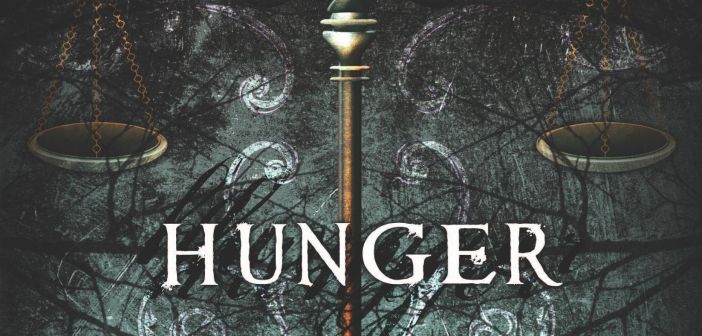Hunger by Jackie Morse Kessler is a unique spin on both the typical YA novel about a girl with an eating disorder and the typical YA novel about the looming apocalypse. Lisabeth is seventeen, anorexic, and in deep denial about how ill she is, when she’s called to be Famine, one of the four Riders of the Apocalypse (with more than one woman in their ranks, they’re not quite Horsemen). “Called” might be the wrong word, as another Rider, Death, offers Lisabeth a choice: become Famine, or die from the overdose that brings him to her.
 At first I was skeptical and wary of having an anorexic girl become the physical embodiment of Famine. After all, anorexia nervosa (the most deadly psychiatric illness) uses food as a symptom of psychological distress. But then, of course, Famine is also a symptom, isn’t it?
At first I was skeptical and wary of having an anorexic girl become the physical embodiment of Famine. After all, anorexia nervosa (the most deadly psychiatric illness) uses food as a symptom of psychological distress. But then, of course, Famine is also a symptom, isn’t it?
The book is well written, easy to read, and short. Lisabeth is a little distant from the reader, but in a way that makes her irrational thought processes (as a result of her illness) easier to process and swallow, so to speak. Her family dynamics are complex, her friendships realistic, her reactions natural. She feels, in other words, real both as a teenager and as a teenager with anorexia. And her own ability to understand hunger, especially since hunger does not feel like a choice to her, helps her understand famine with the lowercase f.
As a book containing a character with an eating disorder, Hunger sings with authenticity. Lisabeth’s anorexia is visceral, bordering on uncomfortable, exactly as it should. Some internal thought processes will seem irrational to readers without an eating disorder, but others may be recognizable. Lisabeth’s external pressures are not uncommon. After all, many teenagers who do not develop eating disorders must navigate the tricky waters of parental pressures, societal pressures, and living up to—or failing to live up to—perceived expectations. We all face those problems in our adolescence.
And the book is framed in a larger context, that of the coming apocalypse, where the final conflict plays out between Famine and the one other Horseperson whose presence made Lisabeth uncomfortable right from the start . And no, it’s not Death. If anything, Lisabeth’s fairly comfortable with Death, which also makes sense both from the parable side of things and from the psychological illness side of things.
In Madeleine L’Engle’s Margaret Edwards Award speech given in 1998, she said, “Often the only way to look clearly at this extraordinary universe is through fantasy, fairy tale, myth.” And that idea is put to excellent use in Hunger. Kessler explores psychology, genetics, close and broader cultural pressures, and all of the elements that make one person develop an eating disorder where another person may not, through the lens of a fantastical world. And she does it so well that I’d recommend the book not only to readers interested in eating disorders in YA literature, but to readers who like that mix of the psychological and fantastical. These paranormal elements give the reader some needed breathing room from the intensity in Lisabeth’s head.
I say this with one caveat, however. Lisabeth uses numbers not infrequently. She counts calories and minutes on the exercise bike for most of the food items mentioned in the book
For people with eating disorders, numbers are imbued with an inflated power that can control an entire day, week, or life. Using numbers in a book with an eating disorder character makes the book about someone with an eating disorder but not for someone with an eating disorder.
So if numbers are triggering to you, I would be careful about when and if I picked this book up. If you’re solid in your recovery or if you have not suffered from an eating disorder, then this is definitely a book to add to your TBR. I’ll be picking up the other books in the series as soon as I can!


1 Comment
Pingback: Interview with Jackie Morse Kessler about the Riders of the Apocalypse series